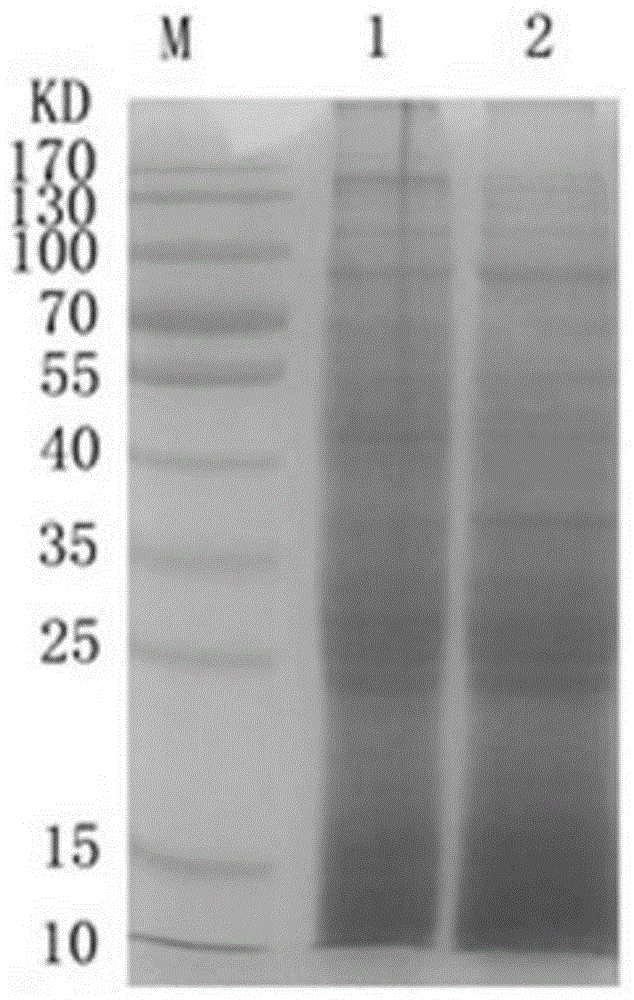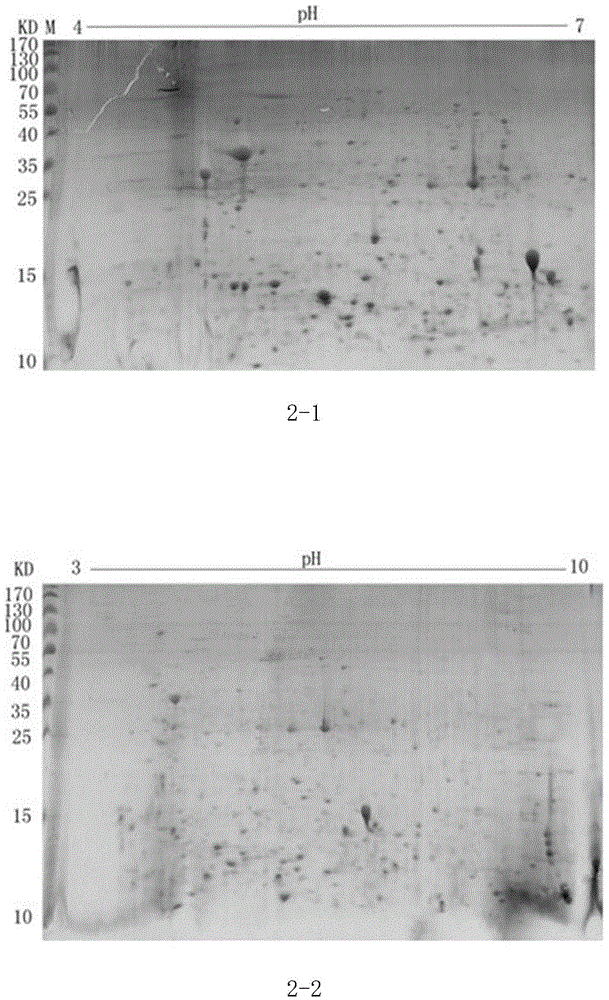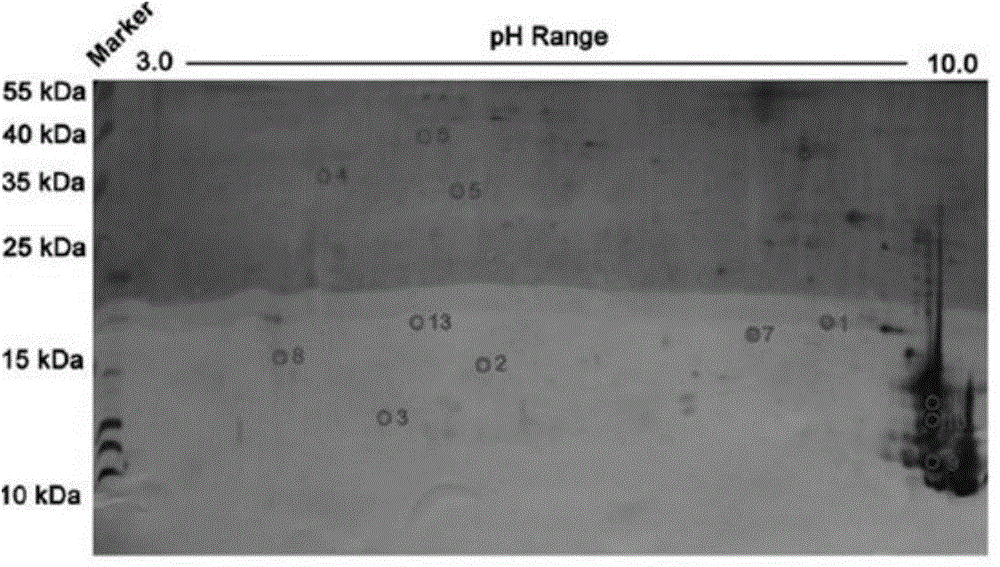Dust mite allergen and application thereof
A technology of allergens and dust mites, applied in the field of biomedicine, to achieve high protein purity, high specificity, and good specificity
- Summary
- Abstract
- Description
- Claims
- Application Information
AI Technical Summary
Problems solved by technology
Method used
Image
Examples
Embodiment 1
[0041] Example 1. Identification of Dust Mite Allergen and Determination of its Amino Acid Sequence
[0042] 1. Breeding of dust mite and extraction of total protein of dust mite
[0043] Grind Dermatophagoides farinae into powder with liquid nitrogen, weigh 2g sample and add 1ml lysate (9M urea, 4% CHAPS, 60mM DTT, 2% IPG buffer), stir on ice for 5min, centrifuge at 15000g for 50min, carefully avoid the upper layer The floating lipid layer and the supernatant absorbed are the total protein of D. farinae. The total protein concentration was quantified by Bradford method, and the remaining supernatant was used for protein electrophoresis analysis.
[0044] 2. Separation of D. farinae protein by two-dimensional electrophoresis
[0045] 1) First dimension isoelectric focusing electrophoresis (IEF) Transfer the hydrated IPG strips to the universal cup loading strip groove, cover the surface of the IPG strips with an appropriate amount of mineral oil, and then separate the two st...
Embodiment 2
[0058] Example 2. Molecular cloning of dust mite allergens
[0059] 1. Extraction of total RNA of dust mite
[0060] Pick clean live D. farinae, and use the RNeasy Mini Kit from Qicgen Company to extract total RNA. The operation steps are carried out according to the instructions.
[0061] 2. Der f 34 full-length cDNA clone
[0062] Using the extracted total RNA as a template, cDNA was reverse-transcribed and PCR amplification was performed. The reaction system is as follows (50 μL): 5 μL of 10×Ex Taq Buffer; 0.25 μL of TaKaRa ExTaq; 4 μL of dNTP Mixture; 2 μL of upstream and downstream primers, 1 μL of cDNA as template; add deionized water to 50 μL. PCR reaction conditions: denaturation at 94°C for 1 min; annealing at 50°C for 1 min; extension at 72°C for 1 min; 35 cycles. PCR products were verified by 1% agarose electrophoresis and photographed.
[0063] The PCR results of Der f 34 gene of dust mite are as follows Pic 4-1 Shown; M is the DNA marker, and lane 1 is the PC...
Embodiment 3
[0069] Example 3: Detection of Allergenicity of Dust Mite Allergens
[0070] 1. Elisa experiment
[0071] Dilute the allergen to 10ug / ml with coating solution, coat with 100ul at 4°C overnight, dilute the patient’s serum at 1:5, and dilute the secondary antibody at 1:2000, and finally measure the light absorption value of OD450nm. The Elisa results of the effect of Der f 34 on the serum IgE of dust mite allergic patients are as follows: Figure 5 As shown, among them, p1-p3 is the experimental group, c1-c2 is the control group, P1-P3 is the serum of patients with positive skin test, and C1-C2 is the serum of healthy people; Figure 5 It can be seen that the absorption value at 450 nm of the Der f 34 positive group is more than 4 times that of the negative control group.
[0072] 2. Skin acupuncture experiment
[0073] The allergen dissolved in normal saline was dropped on the skin of the palm side of the patient’s forearm, and the skin was punctured with a special pricking ...
PUM
 Login to View More
Login to View More Abstract
Description
Claims
Application Information
 Login to View More
Login to View More - R&D
- Intellectual Property
- Life Sciences
- Materials
- Tech Scout
- Unparalleled Data Quality
- Higher Quality Content
- 60% Fewer Hallucinations
Browse by: Latest US Patents, China's latest patents, Technical Efficacy Thesaurus, Application Domain, Technology Topic, Popular Technical Reports.
© 2025 PatSnap. All rights reserved.Legal|Privacy policy|Modern Slavery Act Transparency Statement|Sitemap|About US| Contact US: help@patsnap.com



